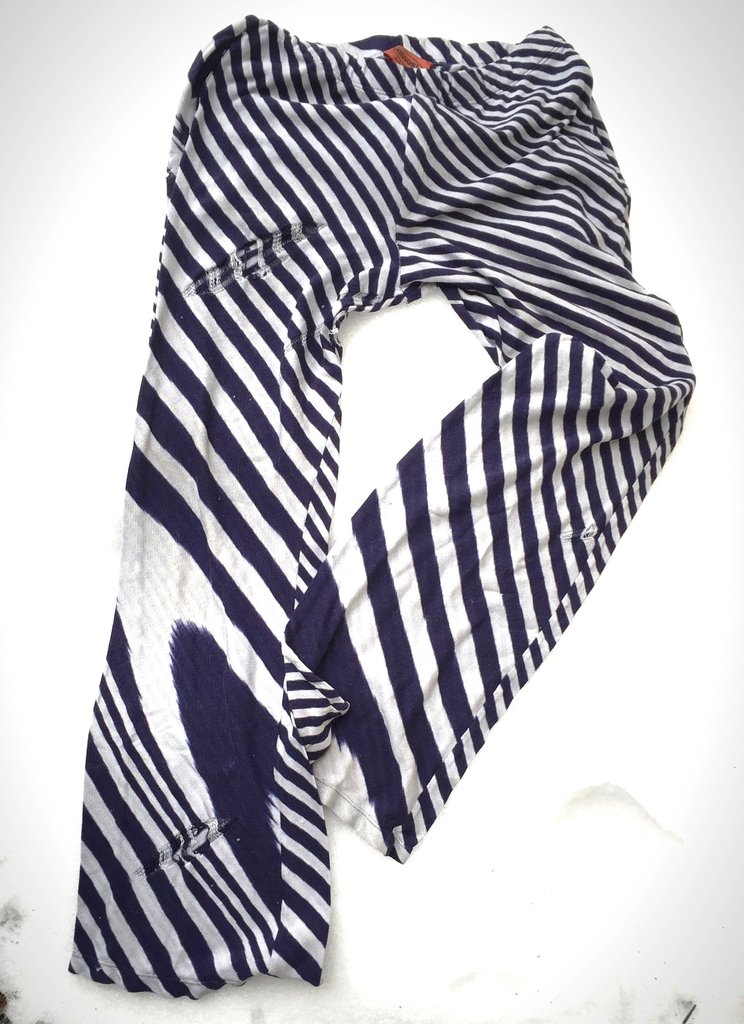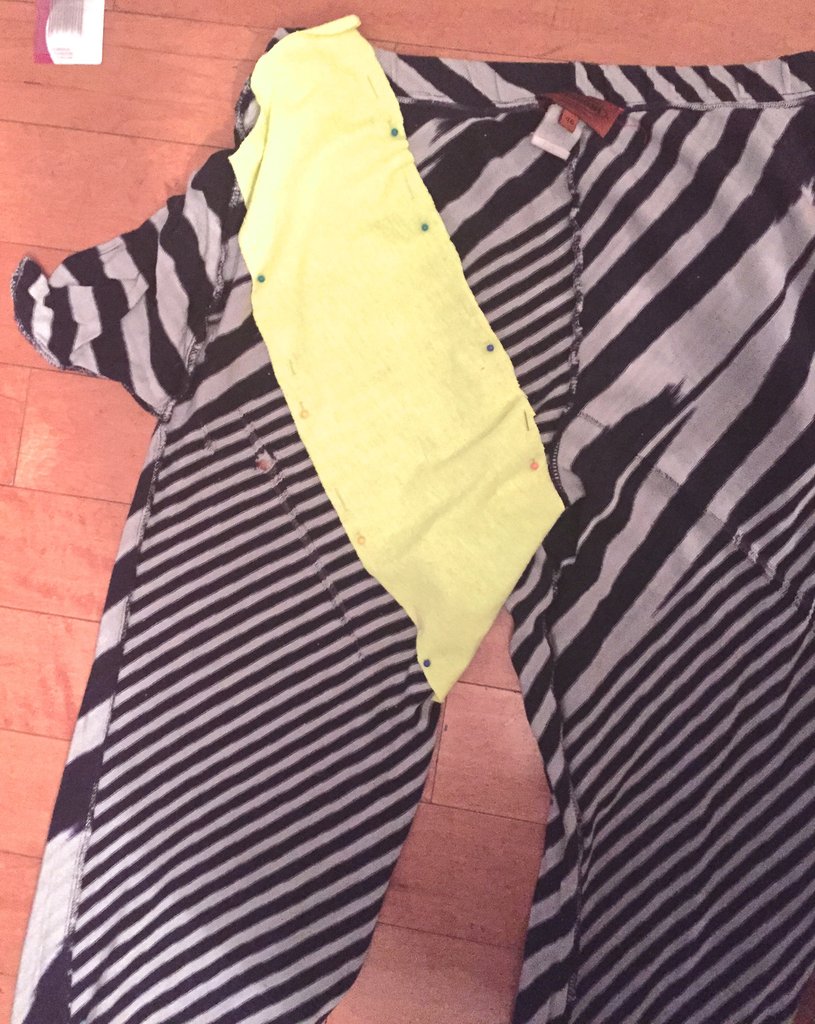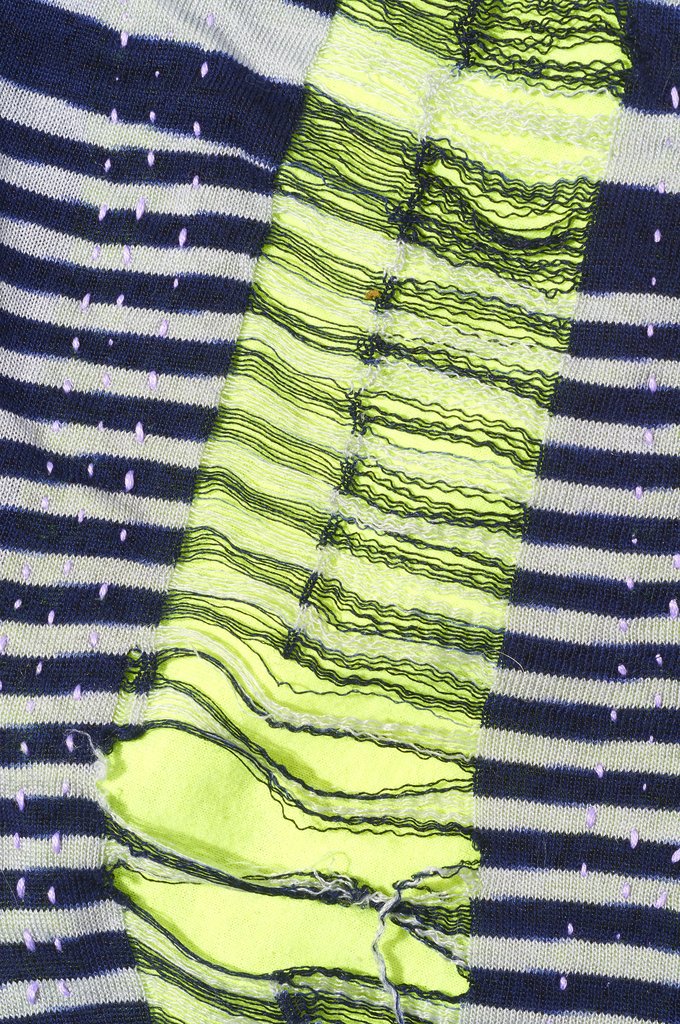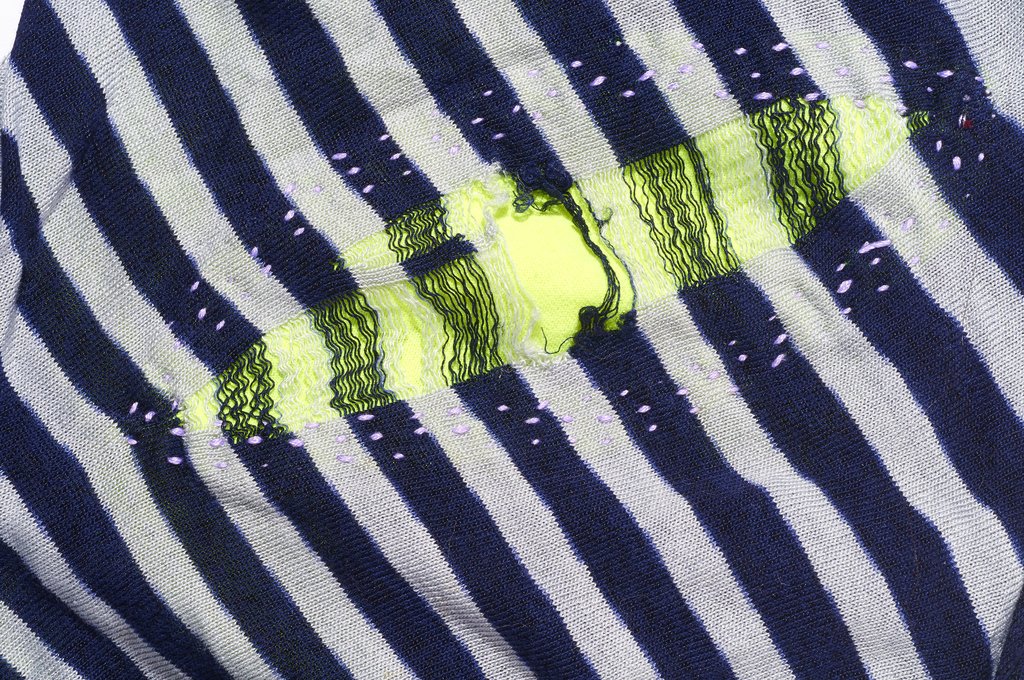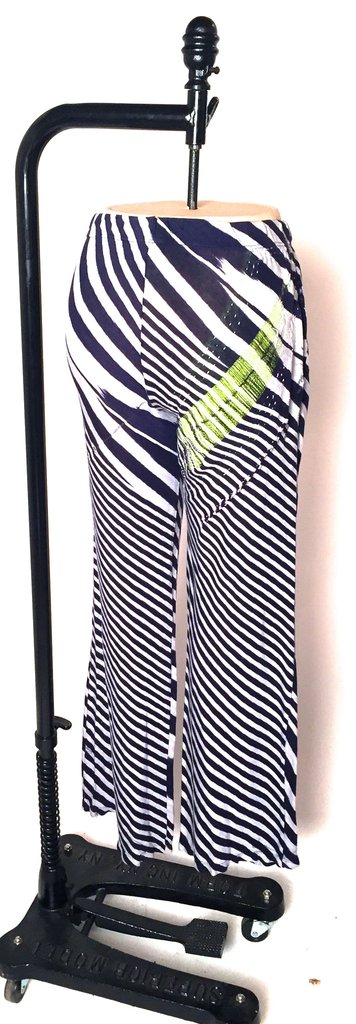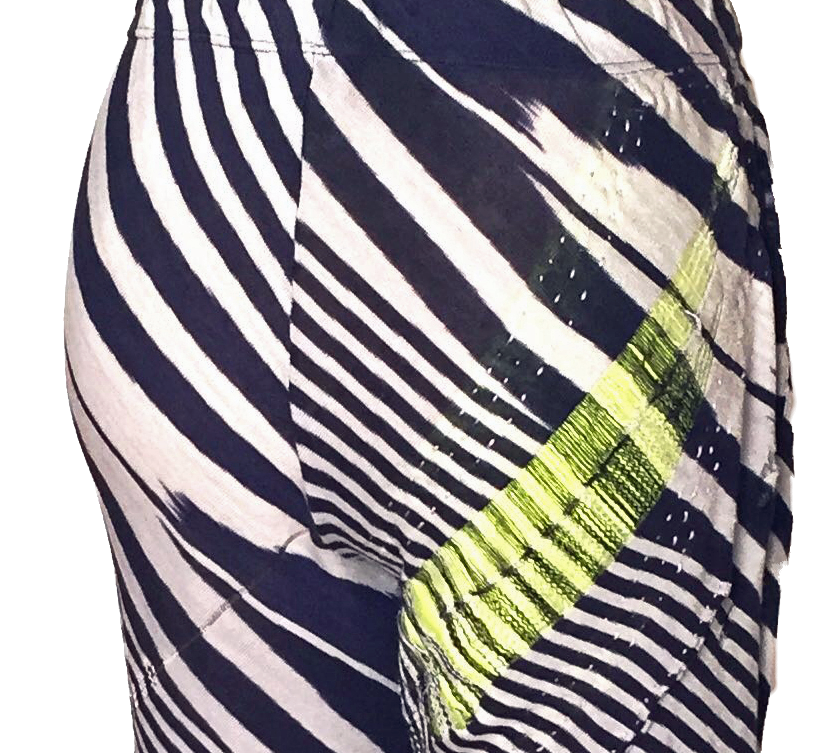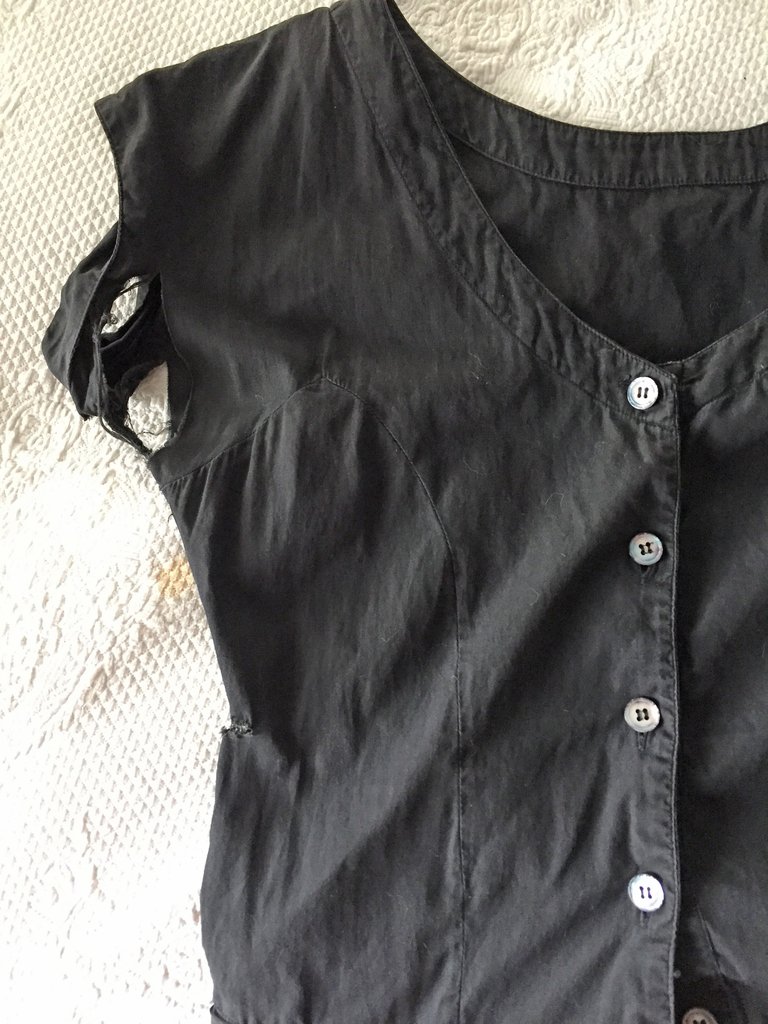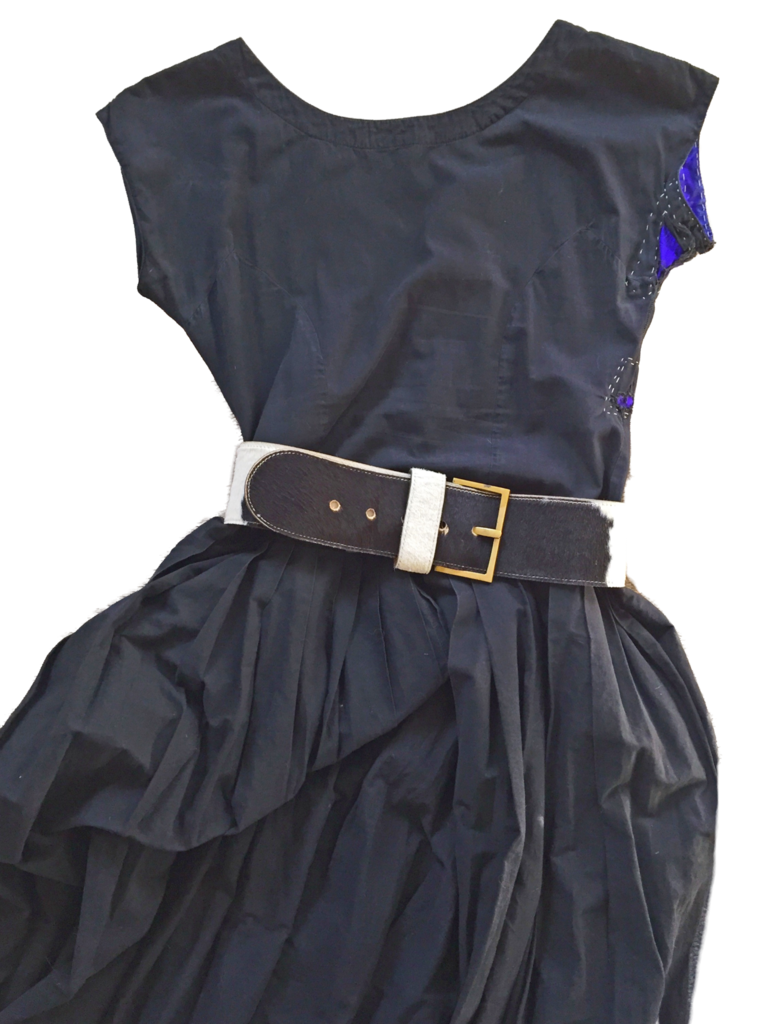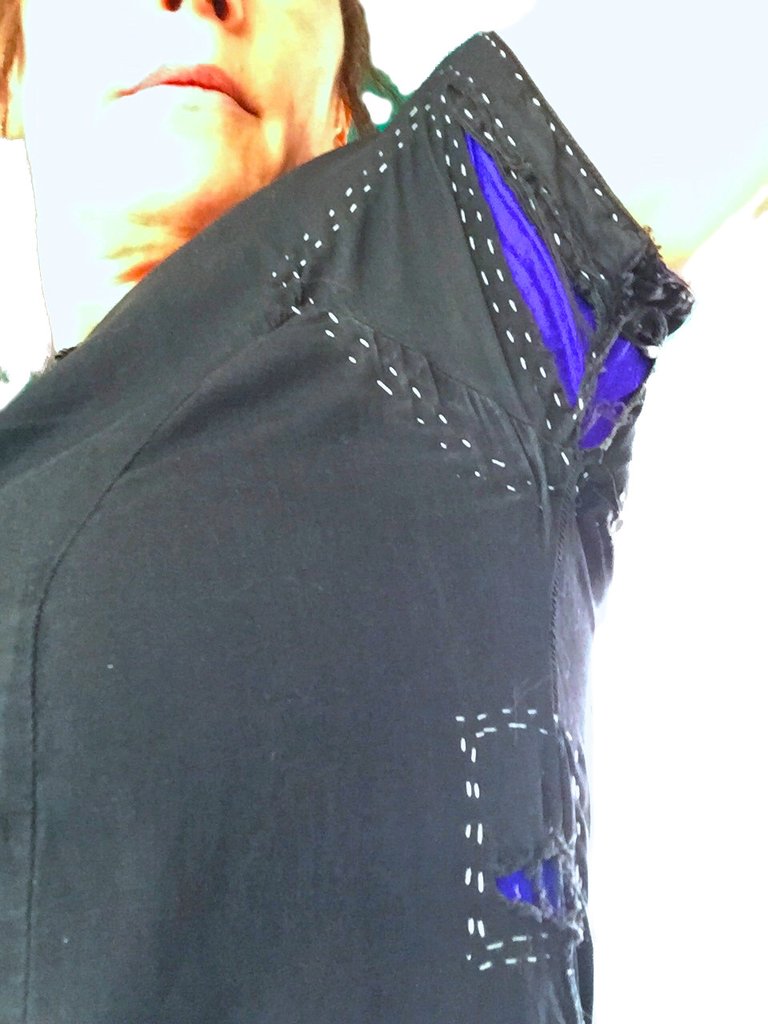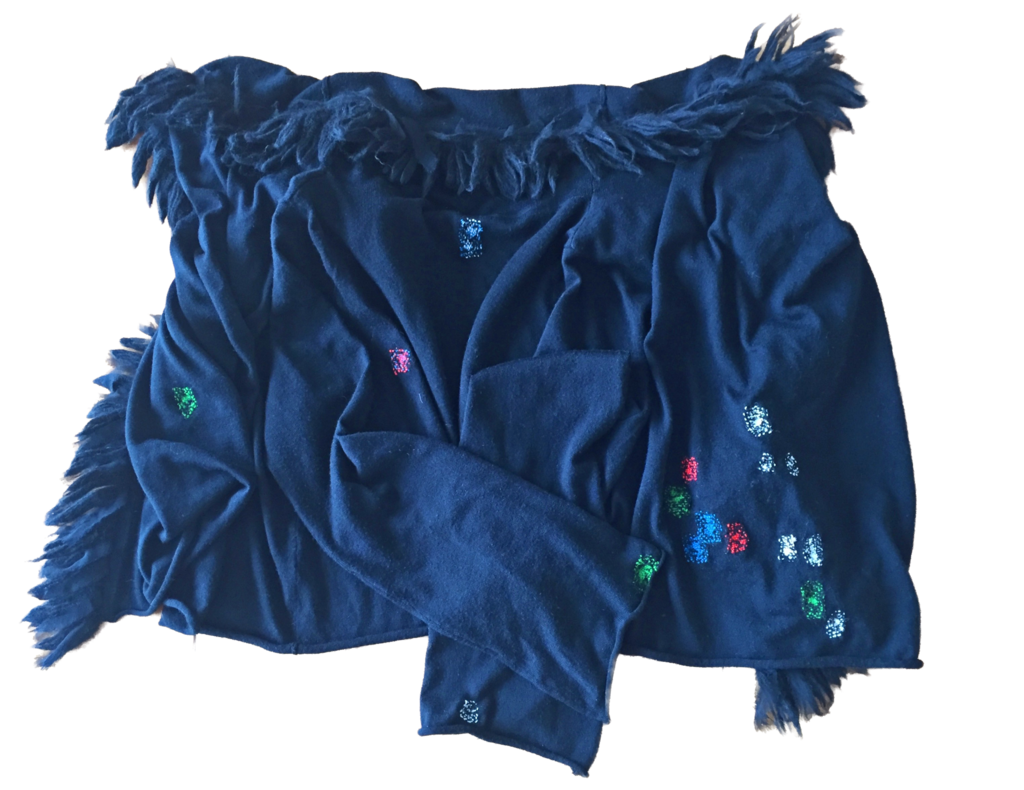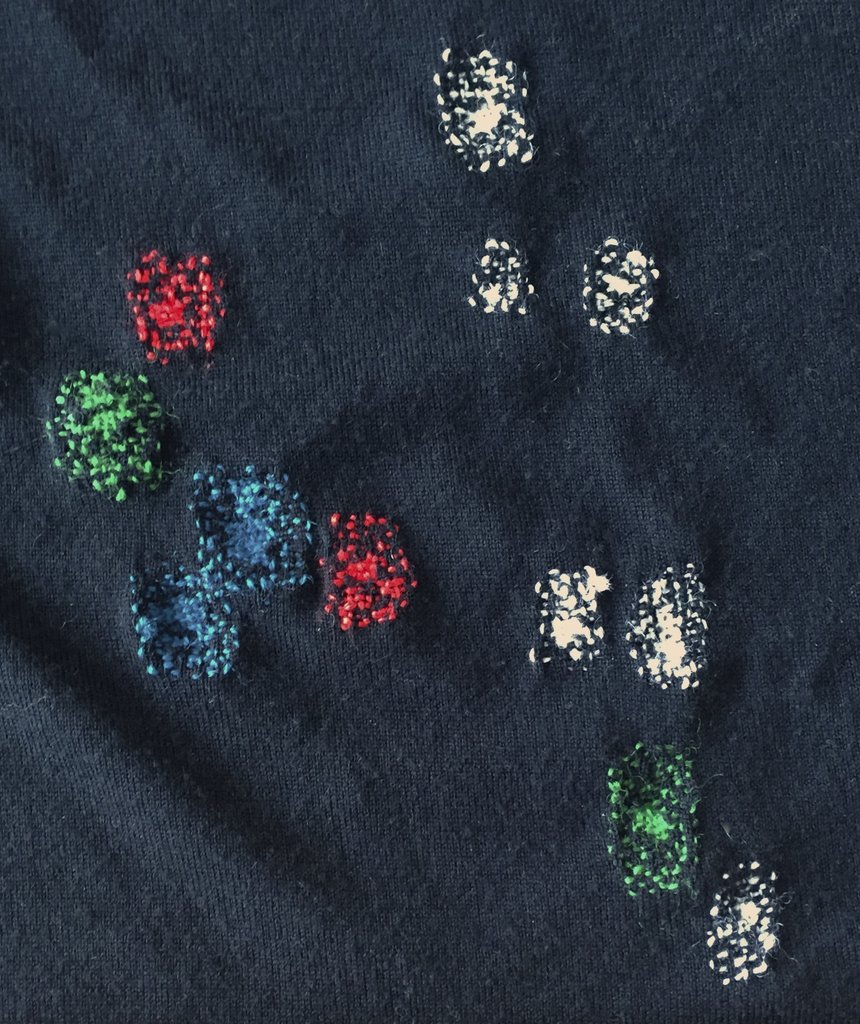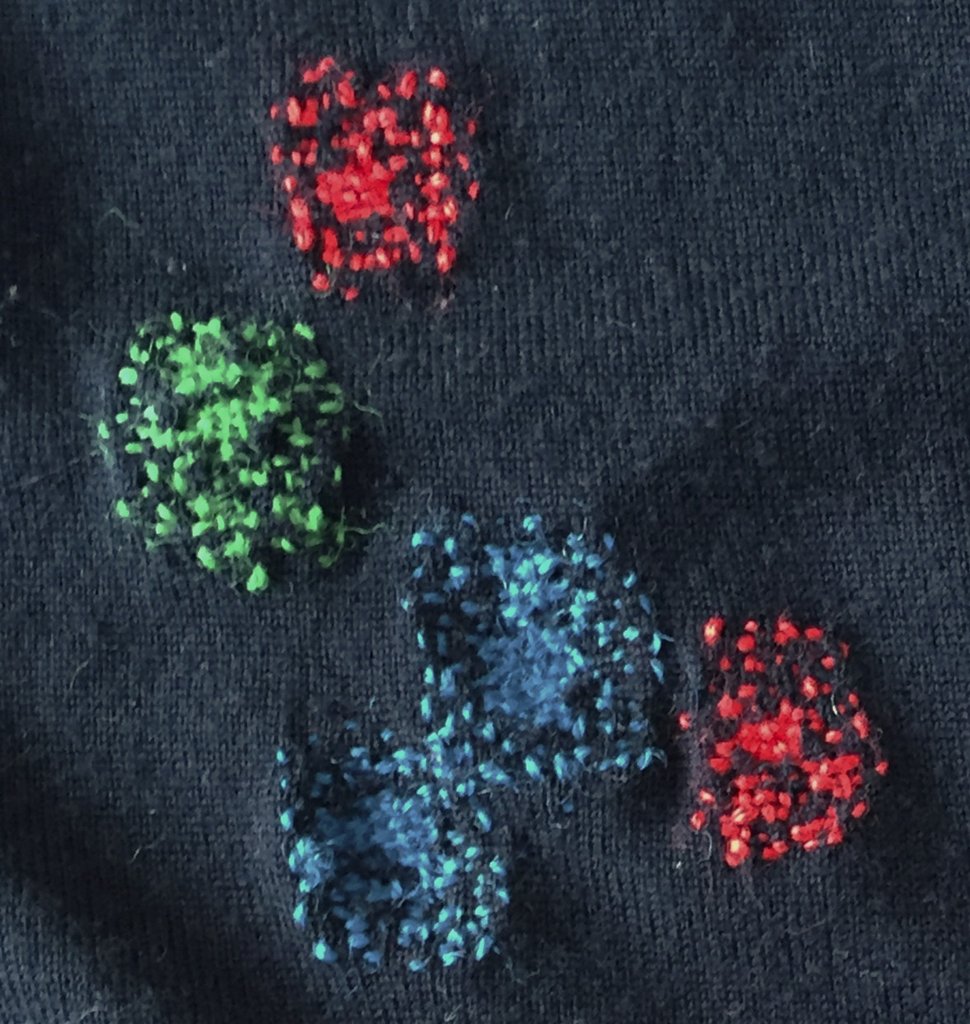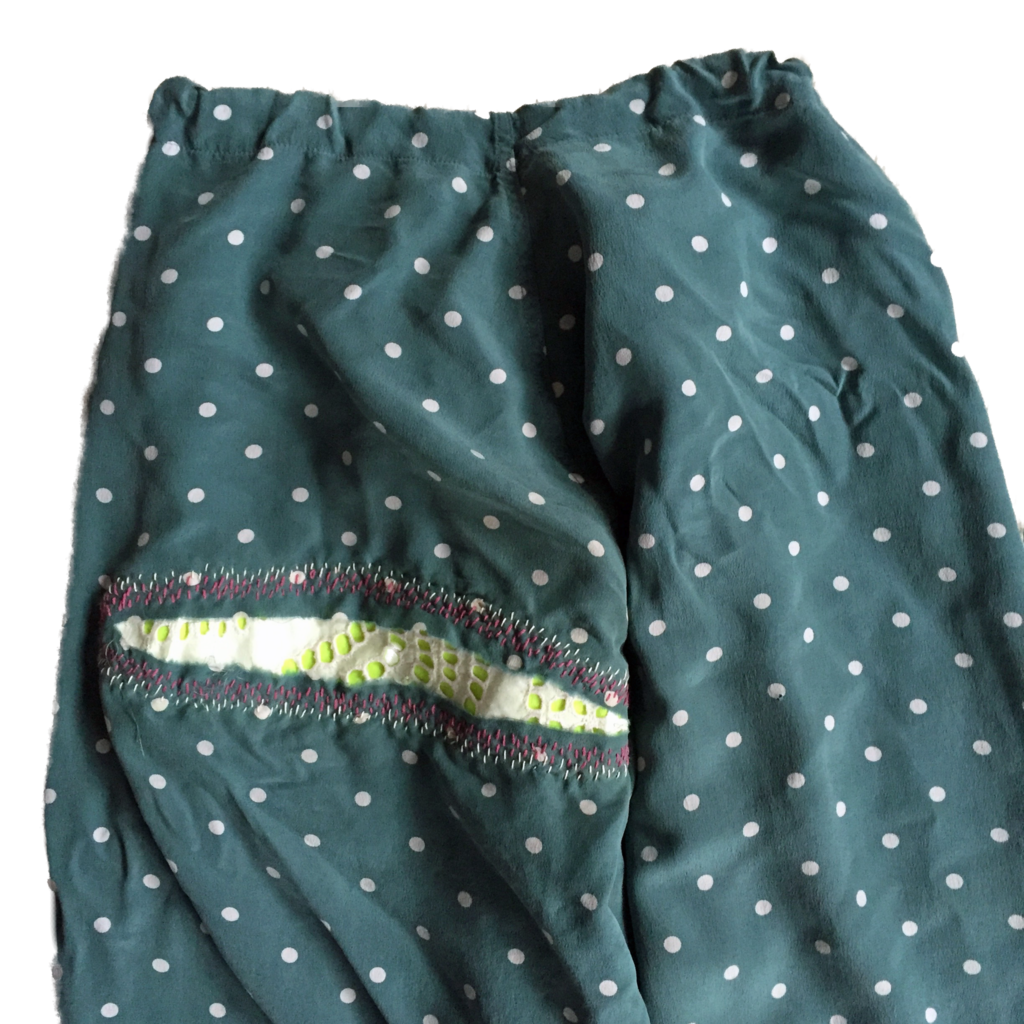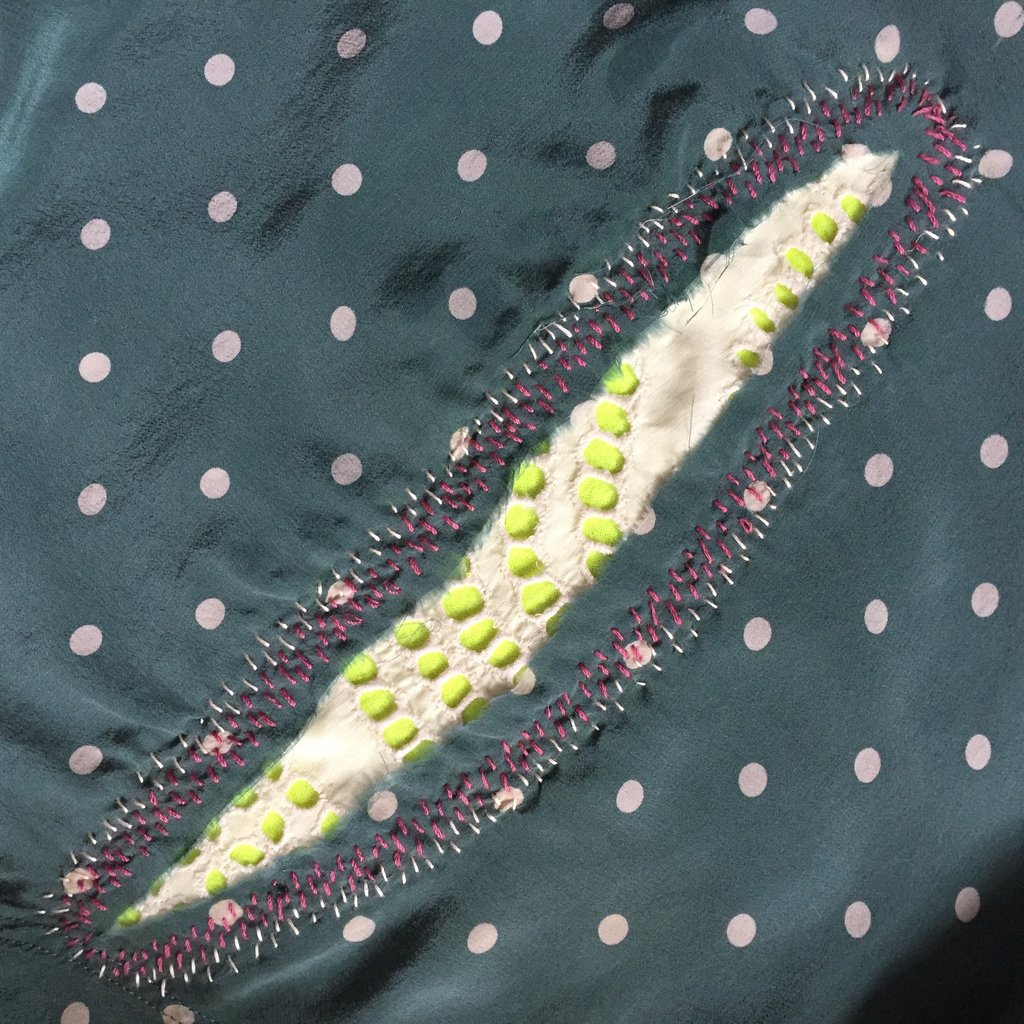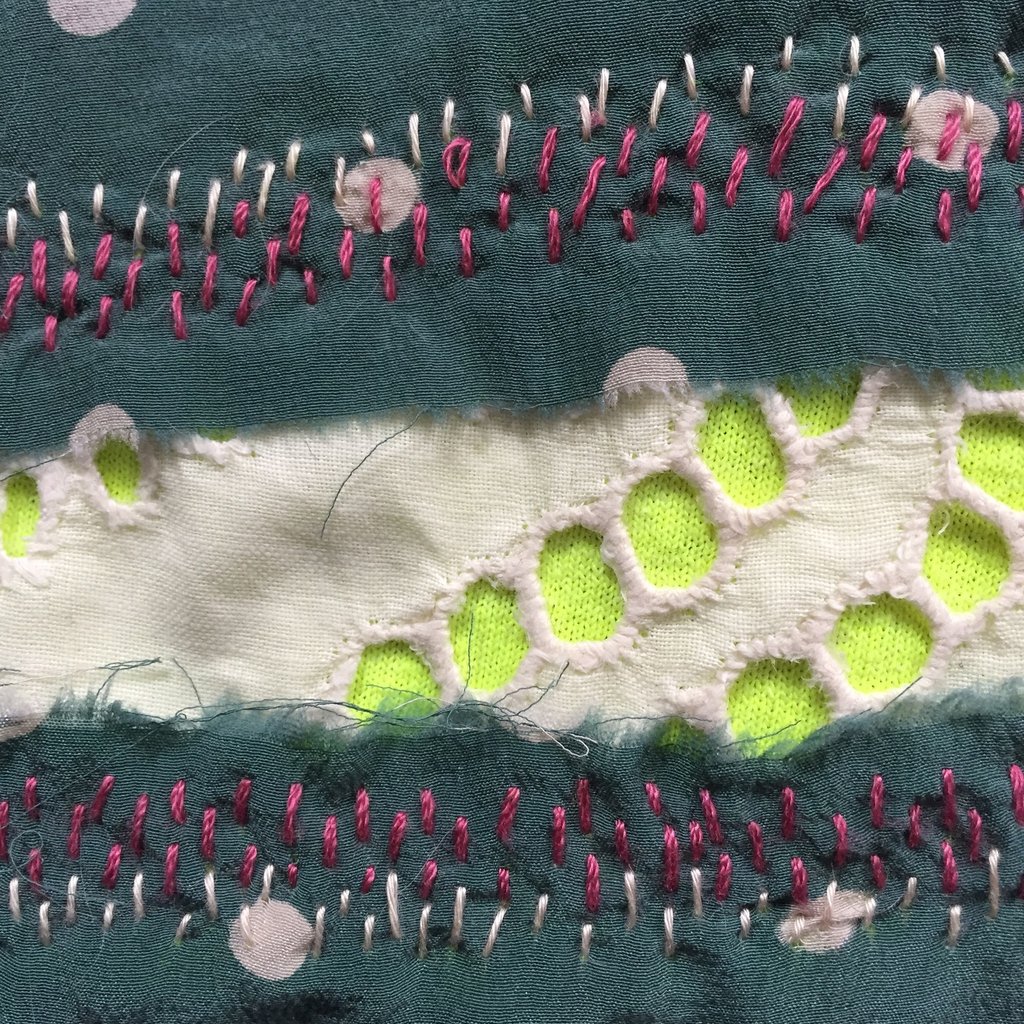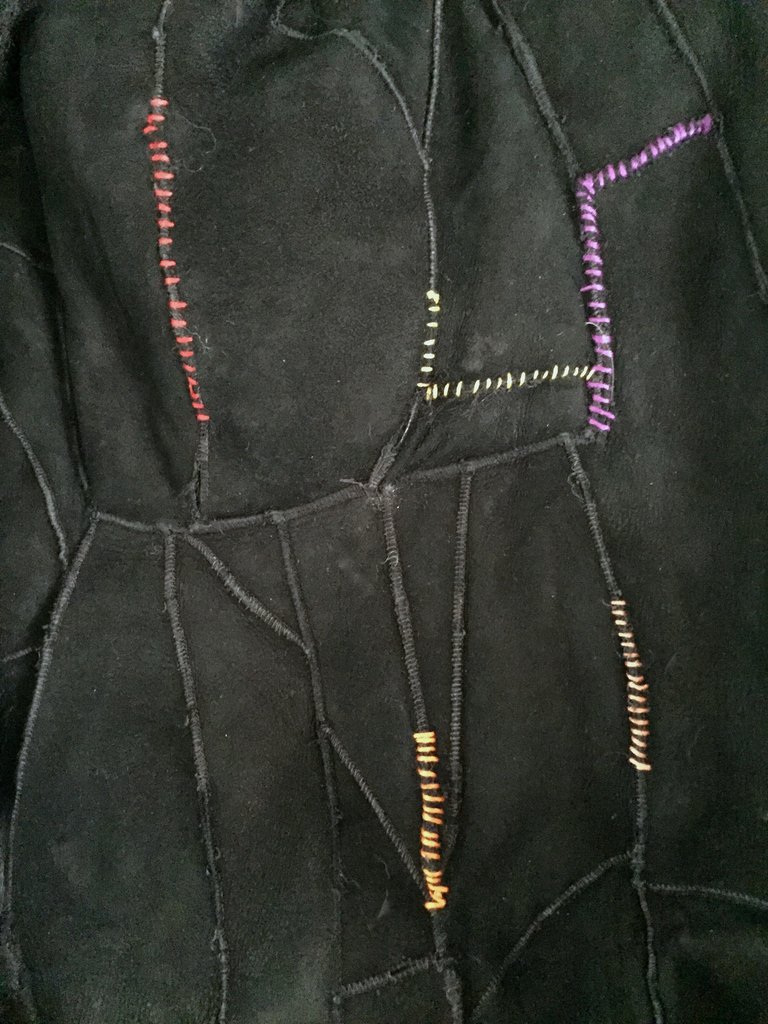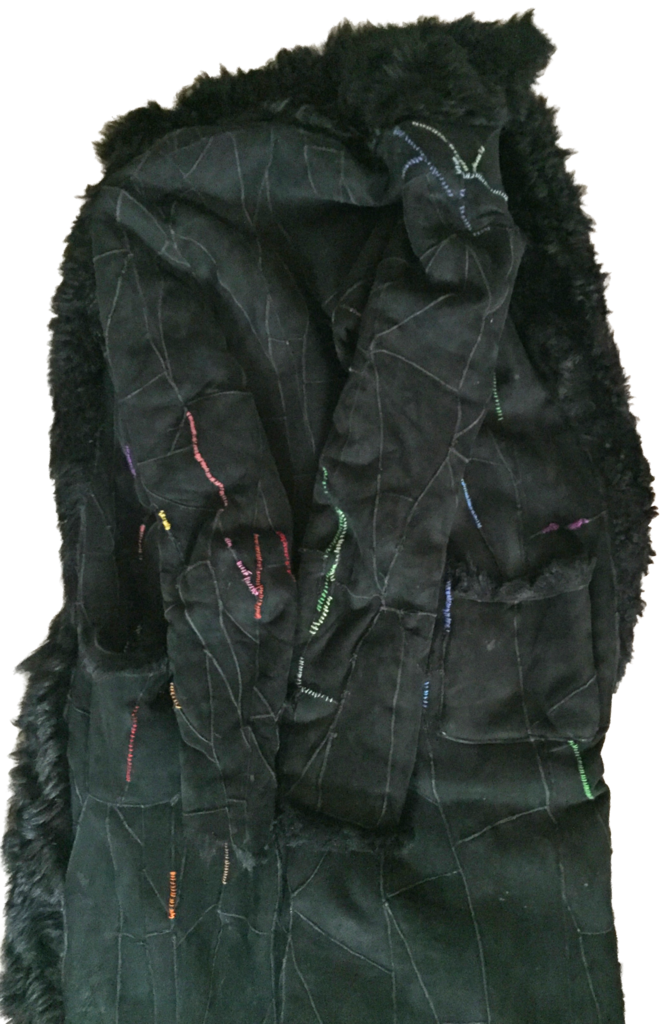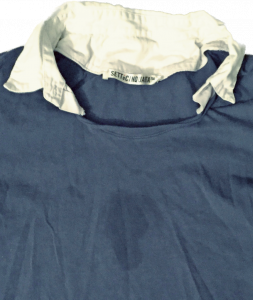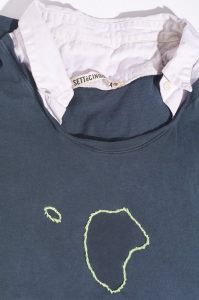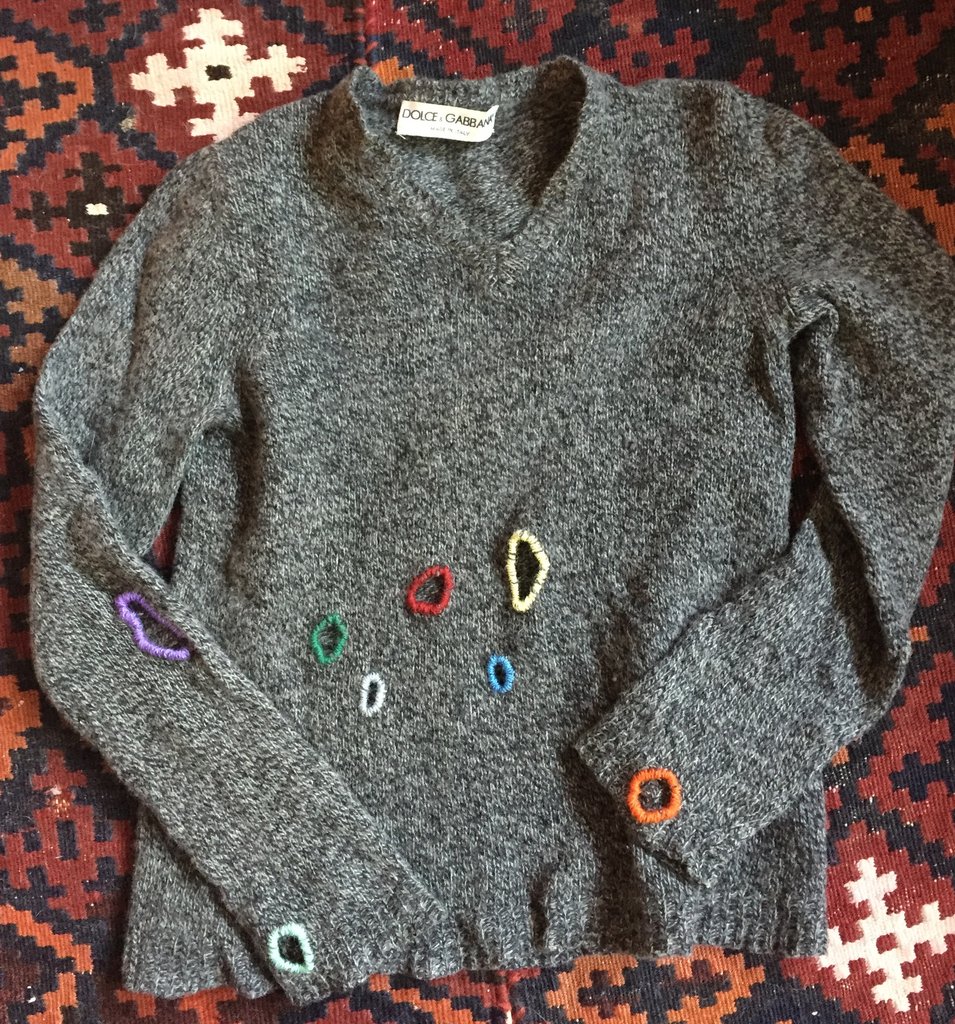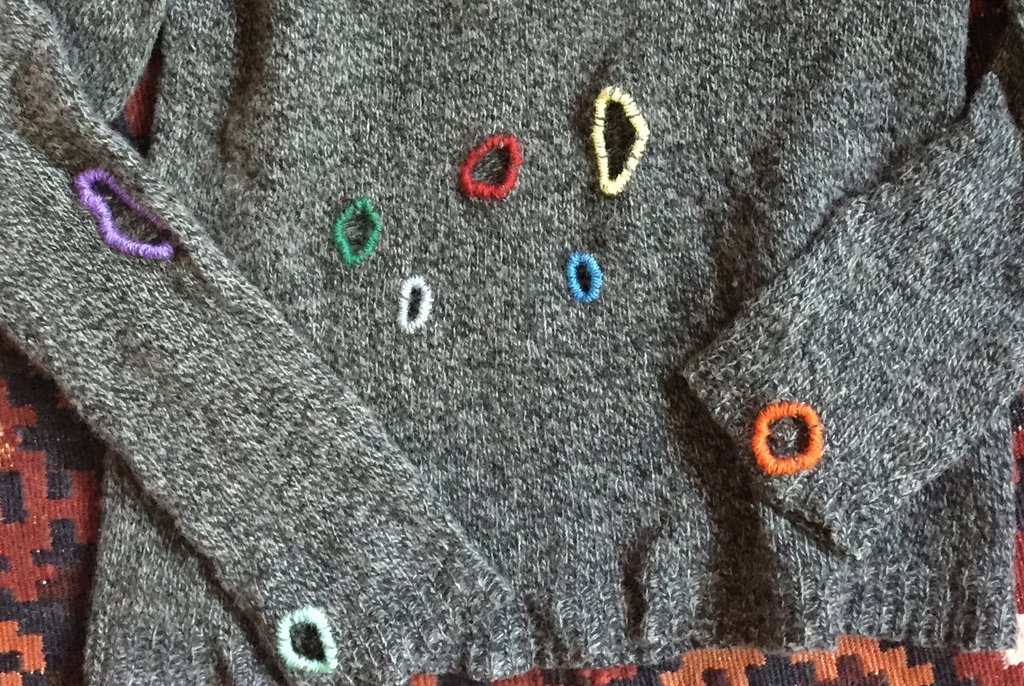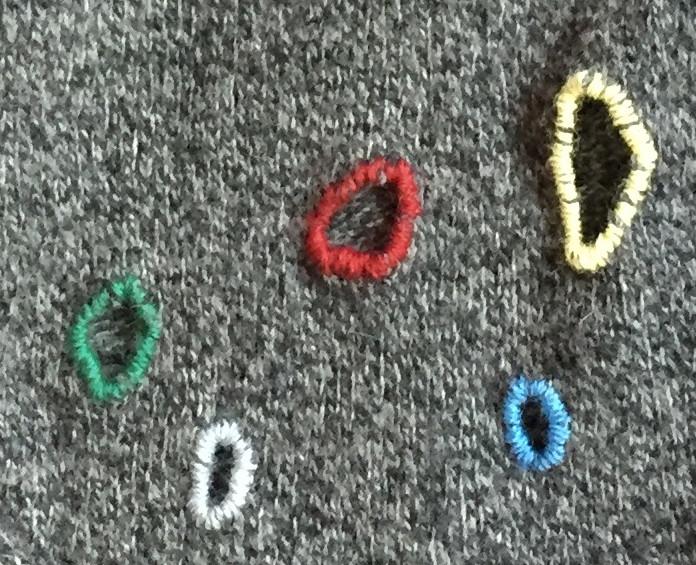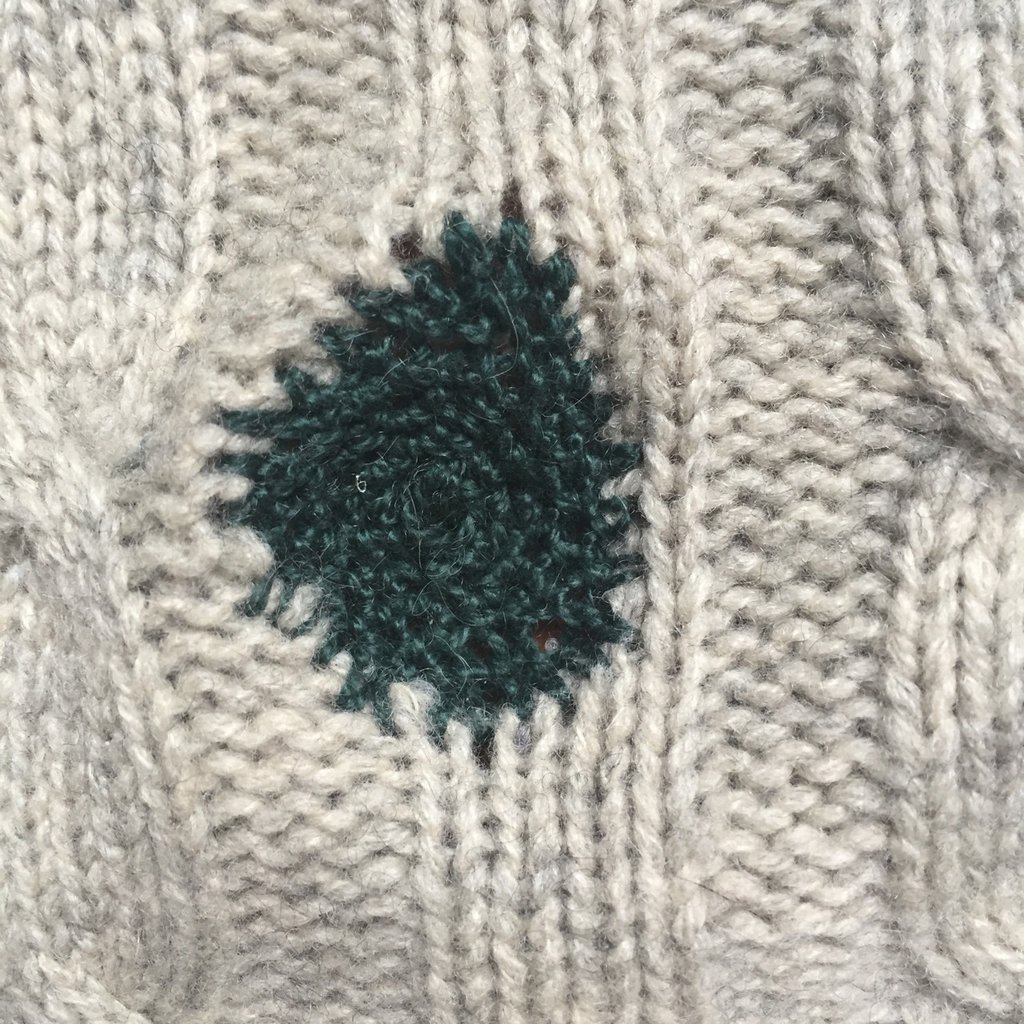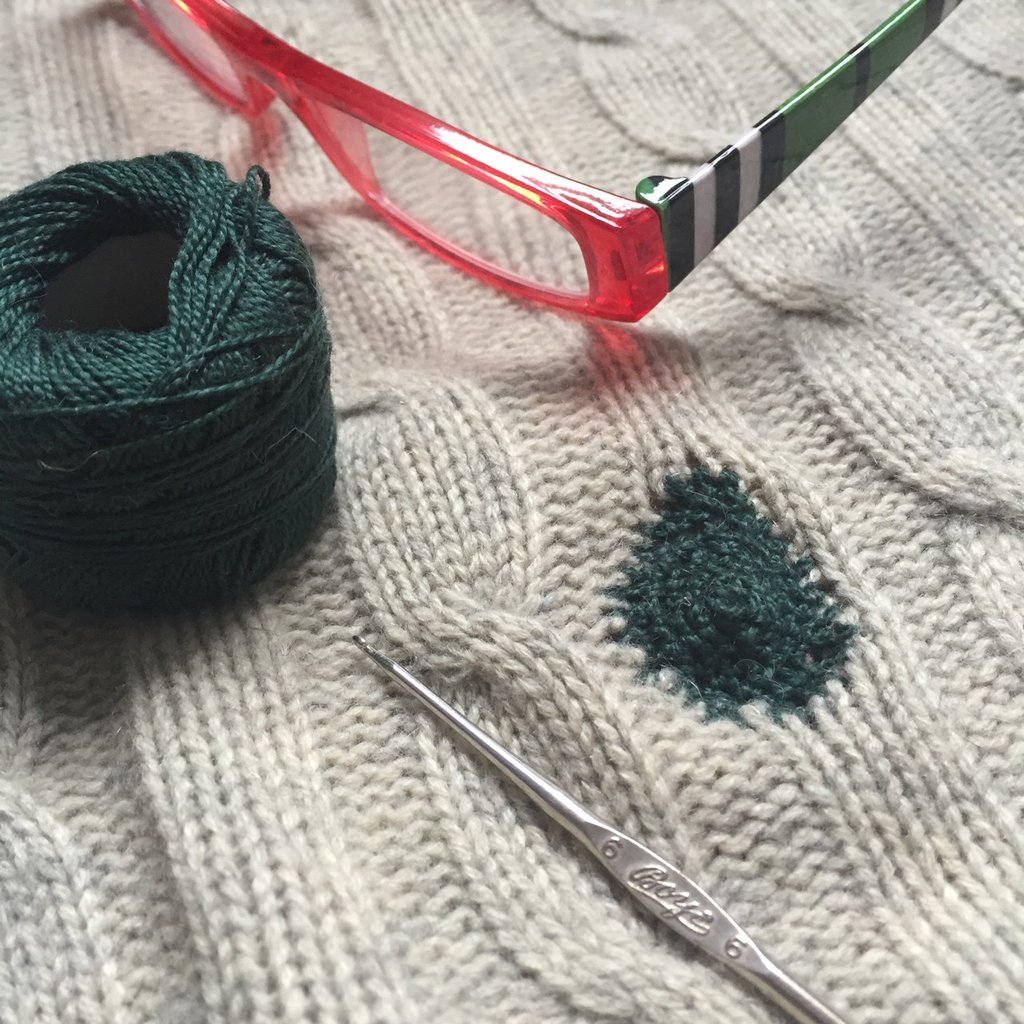About Visible Mending
I started visibly mending many, many years ago, and I’ve been sewing all my life. My mother taught me, as her mother taught her, and so on down the generations. But despite learning how to sew properly, I’ve always preferred making it up as I go–and that’s what VM is all about. There is no wrong way. If it works, it’s correct.
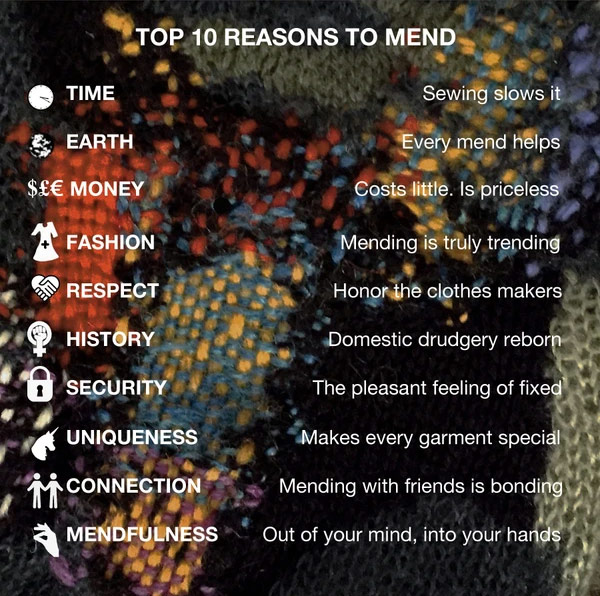
Getting Started
Visible Mending is for everyone, including the unvisual and the cack-handed and the non-sewer. It’s experimental stitchery, mending improv, fun with thread. VM is arty and exuberant and colorful and silly. The only way to go wrong is to say: I can’t. Of course you can! Read on for all you need to VM yourself.
Supplies
These are the essentials, in order of need.
NEEDLES. Of course you need a needle.
THREAD. Cotton thread for general sewing.
EMBROIDERY FLOSS. In heavy rotation for outlines.
YARN. Wool or acrylic, mending or knitting wool.
FABRIC. Collect pretty pieces for patching.
SCISSORS. Consider investing in good ones.
DARNING MUSHROOM. So handy, such a nice name.
PINCUSHION. For your pins of course.
EMBROIDERY HOOP. For tension management.
NEEDLE THREADER. I’m completely dependent.
THIMBLE. The icon of drudgery, but saves your skin.
SEAM RIPPER, rotary cutter, pocket shears: useful.
IRON. Ironing makes everything go smoother.
BUTTONS. Boring repairs & also embellishment.
In fact, the only equipment that is absolutely essential is needle and thread–though wool or floss in a contrasting color makes it easier to be visible. On the other hand, it’s fun to collect bits of fabric and trimmings to enhance your mends, and, once you’ve established your mending pile, you may never again throw out an old garment–if it’s not worth fixing, you can break it down for parts.
Some examples of Kate’s mends
They are made of that expensive slippery Missoni rayon jersey and I don’t know how, but it laddered like a pair of nylons. A great candidate for an extensive bout of underpatching with sashiko. I cut up a neon yellow t shirt from daughter’s old summer camp to back the areas and attached it with pickstitch in three strands of pink floss. I wear them more now.
Techniques and Materials
- Underpatch
- Sashiko pickstitch
- T-shirt
- Three strand floss
This is one of my most favorite gone-vintage-in-my-closet frocks, a black cotton number by Willy Smith with a voluminous skirt and a mother of pearl buttoned back. What I did wrong was always wear it back to front, thus gradually straining various areas, notably the underarms, beyond endurance.
Though the damage was pretty extreme, I was sad about never wearing it, so I set to work with my trusty underpatch and sashiko method, using a gorgeous length of deep violet raw Thai silk I’ve had forever and keep for special occasions. As usual, I now like the dress even better. I wear it right way around.
Techniques and Materials
- Underpatch with sashiko
- Raw Thai silk
- 1920s French ivory cotton floss
I’d gone off this Alice & Olivia fringed slouch cardi but then was desperate to darn and this was all I had to hand. I needlewove somewhat neatly in red, blue, green and white and enjoyed it thoroughly and hey now I like the sweater again.
Techniques and Materials
- Darning
- Needleweaving
- Darning wool
I scored a bunch of lovely haberdashery in Japan and thought I should do something special, so addressed another old fave: this men’s PJ pant gone-very-vintage-in-my-closet. It’s another underpatch arrangement, with a bit of dayglo tshirt covered with a piece of broderie anglaise and attached with the usual sort of sashiko-kantha pickstitch, executed in Japanese threads with my new handmade Japanese needle.
Techniques and Materials
- Underpatch
- Sashiko / kantha pickstitch
- Japanese thread
- Ridiculously expensive handmade needle
- Dayglo Tee
- Vintage broderie anglaise
The 70s patchwork sheepskin has not left my back since I got it in 2013 (except in summer), which accounts for why the seams–the many many seams– started separating. Once they’d started it just went on and on, and it’s still going on. So I keep getting out the floss to oversew yet another gap. Eventually the whole thing will be covered in colored lines. I decided one side should be on the red spectrum, the other in the blues end. I call this frankensteining.
Techniques and Materials
- Frankensteining
- Six strand floss
Greasytee
As a fake grown up I find my fronts are continually spattered with dinner. The more I like a t shirt, the more likely it is to be embellished with grease spots, which, as you know, are indelible and, especially in the darker colors of cotton jersey, embarrassingly noticeable. So rather than relegate the nice shirts to the “only indoors” pile, I came up with what I call the Greasytee.
It is simple. Outline the spots. I find this hilarious.
Techniques and Materials
- Split stitch
- Six strand floss
I wore this marled V-neck to death in the early-1990s, having scored it in the Dolce & Gabbana sample sale, then lost it for 20 years, then found it, but holey. It wasn’t even moths, just sheer age and sadness. Given its lack of color, I thought it a perfect canvas for my favorite porthole effect. This is where you simply outline the holes in a neat eyelet stitch. It’s all about the colors. And the shapes. Now people think the knit was born this way.
Techniques and Materials
- Porthole
- Eyelet Stitch
- Six strand floss
Crochet Menditation
This was my first ever crochet mend! It’s crazy crochet, like crazy paving, since there was no pattern and I made it up as I went along. I have not picked up a hook for (redacted) years, but crochet turns out to be a fantastic meditative practice. Keeping the right yarn tension worked splendidly on my brain tension, as I joined up the knots–which is what crochet amounts to. As long as I held the hook comfortably, had enough light, and wore my very close-up glasses, it sort of worked itself. Now to the other holes on this ancient cashmere cableknit…
Techniques and Materials
- Crochet
- Size 6 hook
- Vintage crochet yarn
- Glasses
Many more of Kate’s mends here
And lots more on Instagram
Visible Mending, USA

PROFILE
Kate Sekules did not invent Visible Mending.
Her book MEND! A Refashioning Manual and Manifesto is about mending (and vintage), from the history, to the reasons, to the practice, with instructions and mendspiration.

